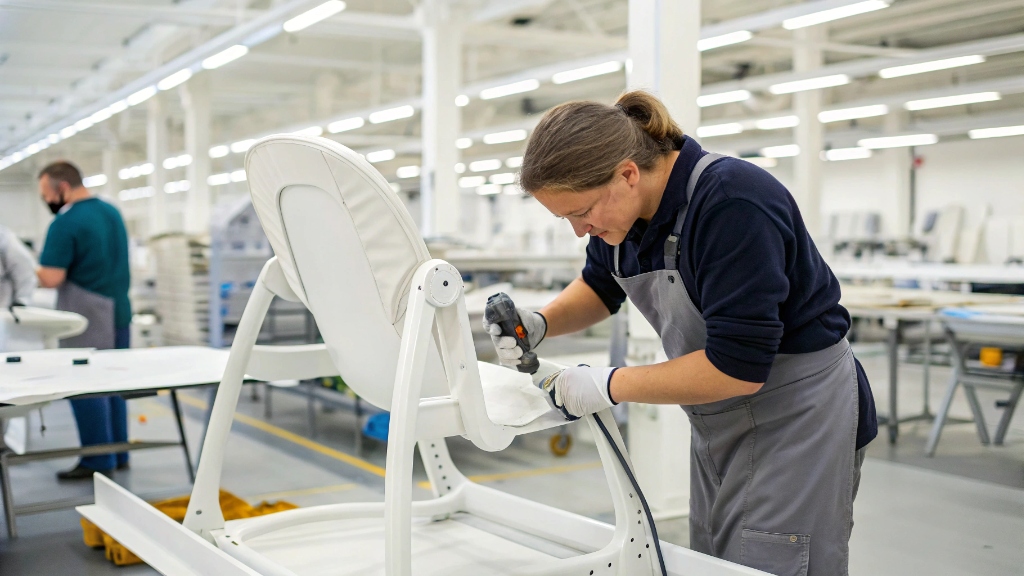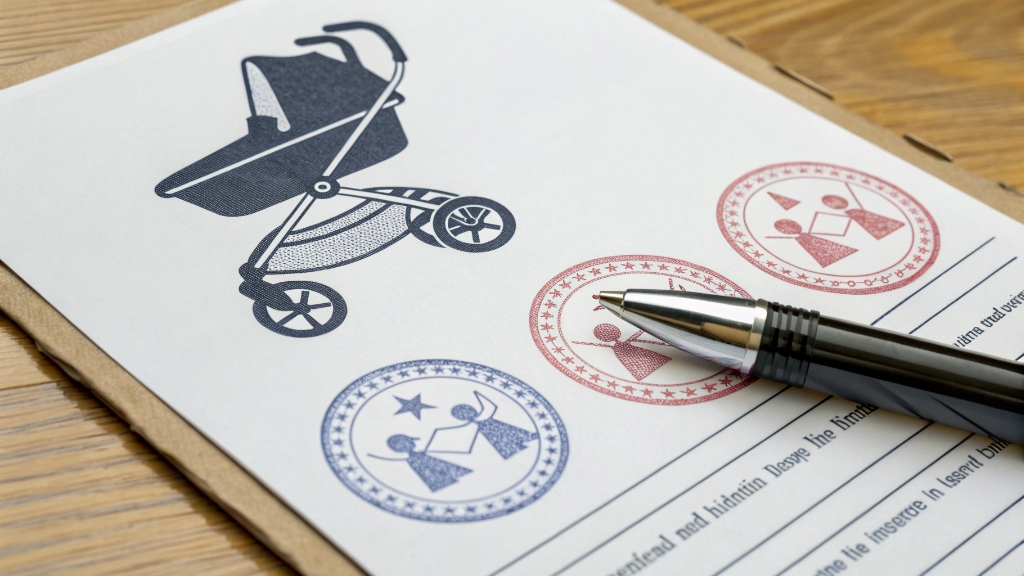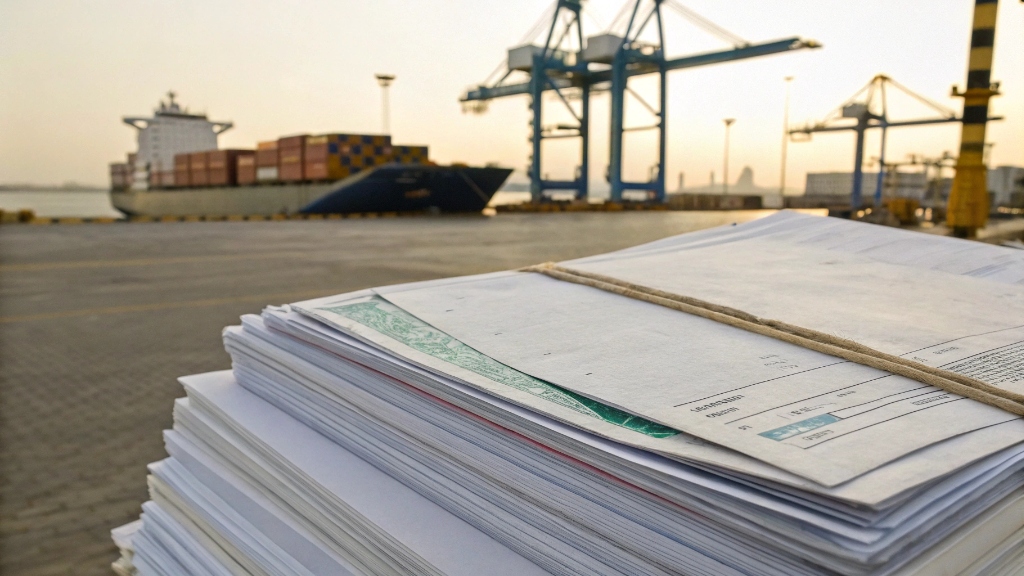Baby stroller safety is a big deal for parents, and knowing what features matter can help manufacturers make strollers that sell like hotcakes. This note breaks down 10 key safety features, their types, and the pros and cons of each, so factories can spot pain points and design better products to boost sales.
Key Points
- Research shows parents prioritize features like brakes, harnesses, wheel stability, and canopy designs.
- Five-point harnesses and full-recline seats seem essential for newborns, but designs vary based on user needs.
- Evidence suggests balancing safety with convenience and cost is tricky but critical.
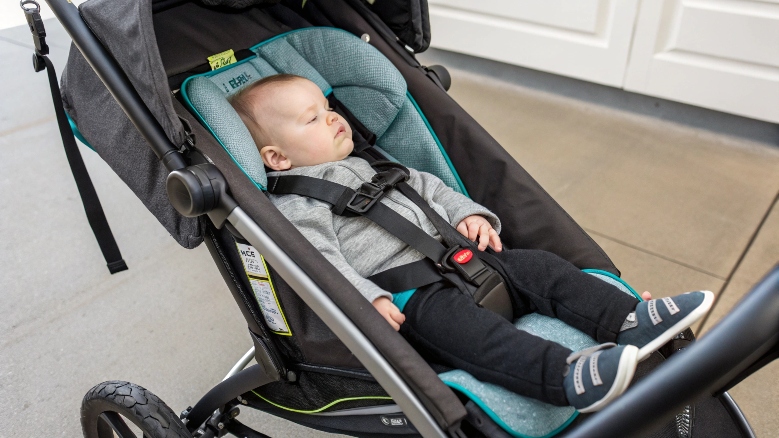
Braking Systems
Brakes keep the stroller from rolling away, especially on slopes or in busy spots. You’ll find single pedal, double pedal, or manual brakes. Single pedals are easy but can fail, double pedals give more control but are trickier, and manual brakes work great for jogging but need your hands.
Safety Harnesses
Harnesses keep babies secure. Three-point harnesses are simple but less safe, while five-point harnesses are top-notch for infants, though they’re a bit bulkier.
Other Safety Features
Wheel setups (fixed for stability, swivel for flexibility), canopy designs (extendable for protection), and materials (light aluminum or sturdy steel) all play a role. Each has trade-offs depending on where and how parents use the stroller.
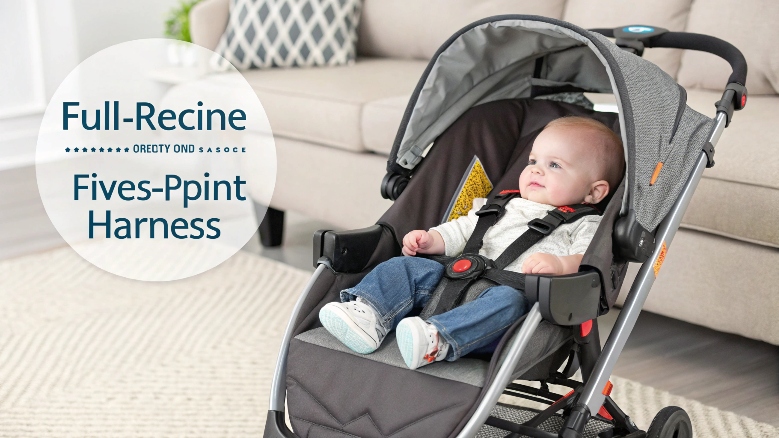
Detailed Analysis
Introduction
Safety is a top concern when parents pick a stroller—nobody wants their baby at risk! Features like brakes, harnesses, and stable wheels are high on the list, with different designs suiting different folks, like city dwellers or parents of newborns. Studies suggest five-point harnesses and flat-reclining seats are must-haves for infants, but balancing safety with ease of use and cost can be tough. This breakdown covers 10 safety features to help factories fine-tune their designs and address what parents really want.
10 Key Safety Features
1. Braking System
Brakes stop the stroller from moving when you need it to stay put, like on a hill or in a crowded store.
-
Types:
- Single pedal brake: One pedal locks both rear wheels at once.
- Double pedal brake: Each rear wheel has its own pedal.
- Manual brake: Like a bike brake, common on jogging strollers.
-
Pros and Cons:
| Type | Pros | Cons |
|---|---|---|
| Single pedal brake | Super easy, one foot locks or unlocks | If it breaks, both wheels could unlock, risky |
| Double pedal brake | More control, can lock one wheel at a time | A bit fiddly, needs both feet, not always intuitive |
| Manual brake | Great for jogging, gives precise control | Needs hands, not great if you’re juggling stuff |
City parents might love single pedal brakes for simplicity, but joggers prefer manual brakes for control, though they’re less handy when you’re carrying a diaper bag.
2. Safety Harness System
Harnesses keep your baby from slipping out, a must for safety during strolls.
-
Types:
- Three-point harness: Straps on shoulders and between legs.
- Five-point harness: Straps on shoulders, legs, and waist.
-
Pros and Cons:
| Type | Pros | Cons |
|---|---|---|
| Three-point harness | Simple, lightweight | Less secure, kids might slip out in accidents |
| Five-point harness | Super safe, spreads force evenly, great for infants | Trickier to adjust, can be bulky |
Five-point harnesses are the go-to for newborns, keeping them snug and safe, but they’re a bit heavier. Three-point harnesses are lighter, better for older kids who don’t wiggle as much.
3. Wheel Configuration and Stability
Wheels affect how the stroller handles different surfaces, balancing safety and ease of use.
-
Types:
- Fixed wheels: Don’t swivel, super stable.
- Swivel front wheels: Spin for easy turning.
- Lockable swivel wheels: Can swivel or lock straight.
-
Pros and Cons:
| Type | Pros | Cons |
|---|---|---|
| Fixed wheels | Rock-solid, great for rough paths or jogging | Tough to maneuver in tight spots |
| Swivel front wheels | Nimble, perfect for city streets or stores | Wobbly on uneven ground, can tip |
| Lockable swivel wheels | Best of both worlds, switchable for terrain | Extra step to lock/unlock, can be confusing |
Fixed wheels are awesome for bumpy trails but a pain in tight spaces. Swivel wheels shine in the city but might wobble on rough ground. Lockable wheels are versatile but add a learning curve.
4. Canopy Design
Canopies shield babies from sun, rain, or wind, keeping them safe and comfy.
-
Types:
- Basic canopy: Simple fabric shade.
- Extendable canopy: Pulls down for more coverage.
- Reversible canopy: Flips to face forward or backward.
- Canopy with peek-a-boo window: Has a clear window to check on baby.
-
Pros and Cons:
| Type | Pros | Cons |
|---|---|---|
| Basic canopy | Lightweight, no fuss | Weak sun/rain protection, no baby view |
| Extendable canopy | Better coverage, great for sunny days | Bulkier, might block your view |
| Reversible canopy | Flexible, baby can face you or the world | More complex, adds weight |
| Canopy with peek-a-boo window | Easy to check on baby without moving canopy | Window might wear out, less protection |
Extendable canopies are great for sun protection but can feel bulky. Reversible ones let parents choose baby’s view, but they’re heavier. Peek-a-boo windows are handy for quick checks, though the clear part might not hold up long.
5. Seat Recline and Leg Protection
The seat’s recline and leg support keep babies comfy and safe, especially newborns who need to lie flat.
-
Types:
- Full recline with leg protection: Fully flat seat with leg support.
- Partial recline without leg protection: Only tilts partway, no leg support.
-
Pros and Cons:
| Type | Pros | Cons |
|---|---|---|
| Full recline with leg protection | Perfect for newborns, supports spine and breathing | Heavier, more complex design |
| Partial recline without leg protection | Lighter, good for older kids | Not safe for newborns, can cause slumping |
Full recline is a must for newborns to keep their spine and airways happy, but it adds weight. Partial recline works for older babies but isn’t safe for infants, who might slump or have breathing issues.
6. Chassis and Base Stability
A stable base keeps the stroller from tipping, especially with wiggly kids.
-
Types:
- Wide base: Broad for extra stability.
- Narrow base: Slimmer, more compact.
-
Pros and Cons:
| Type | Pros | Cons |
|---|---|---|
| Wide base | Less likely to tip, great on uneven ground | Takes up space, tough in tight areas |
| Narrow base | Compact, easy to store or maneuver in crowds | More tip-prone, especially with active kids |
Wide bases are super stable on rough terrain but bulky in tight spots. Narrow bases are great for city life but riskier for tipping with active children.
7. Folding Mechanism Safety
A safe folding mechanism prevents the stroller from collapsing unexpectedly.
-
Types:
- One-handed fold: Folds with one hand.
- Two-handed fold: Needs both hands.
-
Pros and Cons:
| Type | Pros | Cons |
|---|---|---|
| One-handed fold | Super convenient when holding baby or bags | Complex mechanism, might pinch fingers |
| Two-handed fold | Simple, reliable design | Less convenient, needs both hands free |
One-handed folds are a lifesaver for busy parents, but the mechanism can be tricky and pinch. Two-handed folds are straightforward but a hassle if you’re juggling a baby.
8. Safety Locks and Hinges
Locks and hinges keep the stroller from folding or collapsing by accident.
-
Types:
- Automatic lock: Locks automatically when opened or closed.
- Manual lock: Needs manual locking.
-
Pros and Cons:
| Type | Pros | Cons |
|---|---|---|
| Automatic lock | Foolproof, reduces user mistakes | More expensive, possible mechanical issues |
| Manual lock | Simple, reliable | Users might forget to lock, risking safety |
Automatic locks are great for peace of mind but cost more and can fail. Manual locks are dependable but rely on parents remembering to use them.
9. Material Safety and Durability
Materials impact safety, weight, and how long the stroller lasts.
-
Types:
- Aluminum alloy frame: Light and durable.
- Steel frame: Heavier but super sturdy.
- Fabric types: Breathable mesh or waterproof fabric.
-
Pros and Cons:
| Type | Pros | Cons |
|---|---|---|
| Aluminum alloy frame | Lightweight, won’t rust | Can bend, not as tough as steel |
| Steel frame | Super strong, lasts forever | Heavy, might rust if not coated |
| Fabric types | Mesh: breathable; Waterproof: rainproof | Mesh: less durable; Waterproof: can be stuffy |
Aluminum frames are light and rust-free, great for portability, but might bend. Steel frames are built to last but heavy. Mesh fabrics keep babies cool, while waterproof ones block rain but might feel stuffy.
10. Additional Safety Features
Extra features can make a big difference, especially in low-light or with active kids.
-
Types:
- Reflective strips: Boost visibility at night.
- Additional safety straps: Extra security for wiggly kids.
- Buckle clips: Ensure harness stays secure.
-
Pros and Cons:
| Type | Pros | Cons |
|---|---|---|
| Reflective strips | Safer at night or in low light | Can wear out, might not look sleek |
| Additional safety straps | Extra protection for active kids | Can be uncomfortable, add bulk |
| Buckle clips | Keep harness tight and secure | Extra step, parents might skip it |
Reflective strips are awesome for nighttime walks but might fade. Extra straps keep active kids safe but can be bulky. Buckle clips ensure a snug fit but add one more thing to do.
Conclusion
These 10 safety features cover the main things parents care about—structure, function, and materials. Each has different types, and factories need to think about their target audience, like newborn parents, city families, or joggers. For example, five-point harnesses and full-recline seats are non-negotiable for newborns, while urban parents might want one-handed folds and swivel wheels. By tweaking these features, factories can meet parents’ needs, fix pain points, and make strollers that fly off the shelves.


